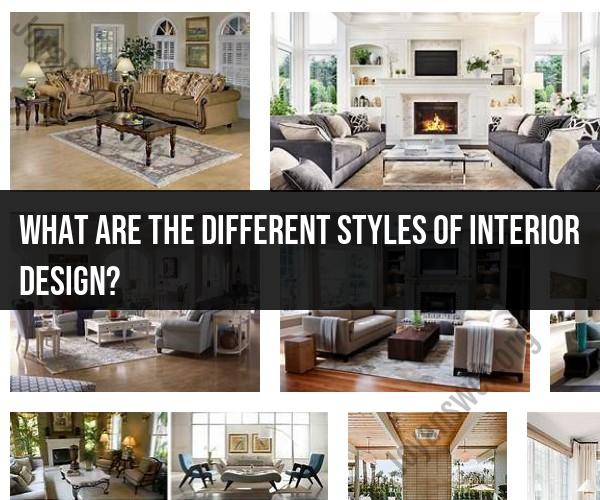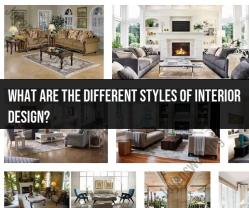What are the different styles of Interior Design?
Interior design encompasses a wide range of styles, each characterized by distinct aesthetics, furniture choices, color schemes, and overall design principles. Here are some of the different styles of interior design:
Contemporary: Contemporary design is characterized by clean lines, minimalism, and a focus on open spaces. It often incorporates neutral color palettes with bold accents, sleek furniture, and an emphasis on natural light and materials.
Modern: Modern design is similar to contemporary but is associated with a specific era, typically the mid-20th century. It features simplicity, functionality, and a mix of materials like glass, steel, and wood. Iconic modern furniture designs often play a prominent role.
Minimalist: Minimalist design follows the principle of "less is more." It features a simple, uncluttered look with a focus on functionality. A limited color palette, clean lines, and the absence of unnecessary decor are key characteristics.
Industrial: Industrial design draws inspiration from factories and warehouses. It often features exposed brick walls, metal accents, concrete floors, and open spaces. It's a style that embraces the raw and unfinished.
Scandinavian: Scandinavian design originates from Nordic countries and emphasizes simplicity, functionality, and coziness. It often incorporates light colors, natural materials like wood and leather, and minimalist furniture.
Traditional: Traditional design is classic and timeless. It often features rich, dark colors, ornate furniture, and detailed moldings. It can encompass various sub-styles like Georgian, Victorian, or Colonial.
Transitional: Transitional design combines elements of both traditional and contemporary styles. It seeks a balance between classic and modern aesthetics, often featuring neutral colors, clean lines, and a mix of classic and modern furniture pieces.
Rustic: Rustic design celebrates the charm of the countryside. It incorporates natural, rugged materials like wood and stone, often with a focus on texture. It has a warm and inviting feel.
Bohemian (Boho): Bohemian design is eclectic and free-spirited. It combines various colors, patterns, and textures from around the world, often featuring unique and handcrafted decor.
Coastal: Coastal design is inspired by beachside and seaside living. It often features a light and breezy color palette, natural materials, and nautical decor like seashells and driftwood.
Mid-Century Modern: This design style is a revival of the design aesthetics from the mid-20th century, characterized by clean lines, organic shapes, and functional furniture pieces.
Art Deco: Art Deco design hails from the 1920s and 1930s and is known for its glamour and opulence. It features geometric shapes, bold colors, and luxurious materials like marble and gold accents.
Vintage: Vintage design involves recreating the look of a specific past era, such as the 1950s or 1970s. It incorporates period-specific furniture, decor, and color schemes.
Eclectic: Eclectic design is a mix-and-match approach that combines elements from various styles. It allows for a personalized and unique look, often incorporating diverse furniture pieces and decor.
These are just a few examples of interior design styles, and there are many more. Interior designers often work with clients to determine their preferences and needs, creating spaces that reflect their individual style and personality. Design styles can also evolve over time and adapt to contemporary trends and influences.








